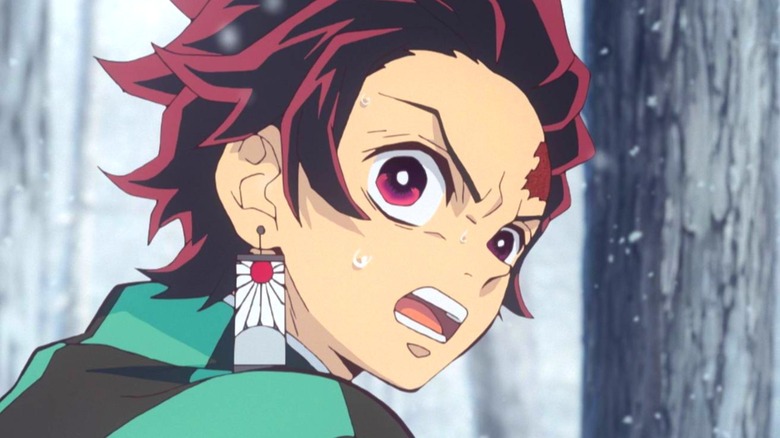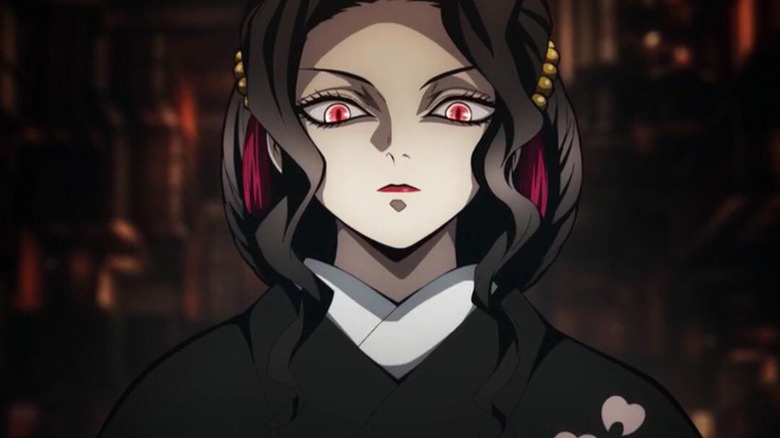The Darkest Part Of Demon Slayer That Almost Went Unnoticed
Recent hit anime "Demon Slayer" originated as a manga serialized in Weekly Shonen Jump. The "shonen" portion of the title literally means "boy" (via Jisho) while more broadly referring to a subgenre within the anime and manga industry. Successful shonen series oftentimes run for considerable lengths of time — in the case of "Naruto," for example, the series initially lasted for 700 chapters in total only for its storyline to continue in sequel series "Boruto," which is still running to this day.
Because of the scope of works like "Naruto," shonen anime and manga stories often sort heroes and villains alike into groups or ranks that serve to organize their large casts of characters. In the case of "Demon Slayer," the majority of its heroes are representatives of the Demon Slayer Corps, an organization dedicated to eradicating villainous demons from the world. At its head are nine Hashira, a position granted to the most capable among all demon hunters.
The demons, meanwhile, are headed by Demon King Muzan Kibutsuji. Directly underneath him in the demon hierarchy are the Twelve Kizuki, divided into six Upper Ranks and six Lower Ranks, representing the strongest warriors demonkind has to offer. The finale of the first season of "Demon Slayer" grants viewers a look at major behind-the-scenes developments within the ranks of the Twelve Kizuki, amounting to what some viewers may not realize is one of the darkest moments in the show's run thus far.
Demons are people too
Oftentimes, individual demons in "Demon Slayer" aren't entirely unsympathetic. Over the course of Tanjiro's fight with Drum Demon Kyogai, for example, it's revealed that Kyogai's villainy is motivated by a simple desire for respect as an artist. Spider demon Rui, meanwhile, turned to villainy primarily due to wanting a functional human body and a caring family. Tanjiro even meets Tamayo, a benevolent demon, while perpetually accompanied by his demonic sister Nezuko. In short, then, even bloodthirsty demons possess markedly human characteristics in the world of "Demon Slayer."
In the Season 1 finale, demon leader Muzan addresses the members of the Lower Ranks of the Twelve Kizuki, who total five following Rui's defeat. After some scolding, Muzan murders four of the remaining five members out of anger. Presumably, those demons had sympathetic, human backstories too, so their unceremonious deaths contrast starkly with, for example, Tanjiro complimenting Kyogai's demonic abilities, thus granting him the acknowledgment of the artistic skills he coveted in his human life before his death.
Not only does Muzan treat the demons they slaughter as disposable, but as the Demon King, Muzan is something of a parental figure. So, not only is their act a waste of human-ish life but a familial betrayal. At a glance, Muzan killing four underlings may appear to be villainy as expected from the series' big bad, but underneath the surface, Muzan reveals their true colors at that moment as a villain as heartless as they are ruthless.

